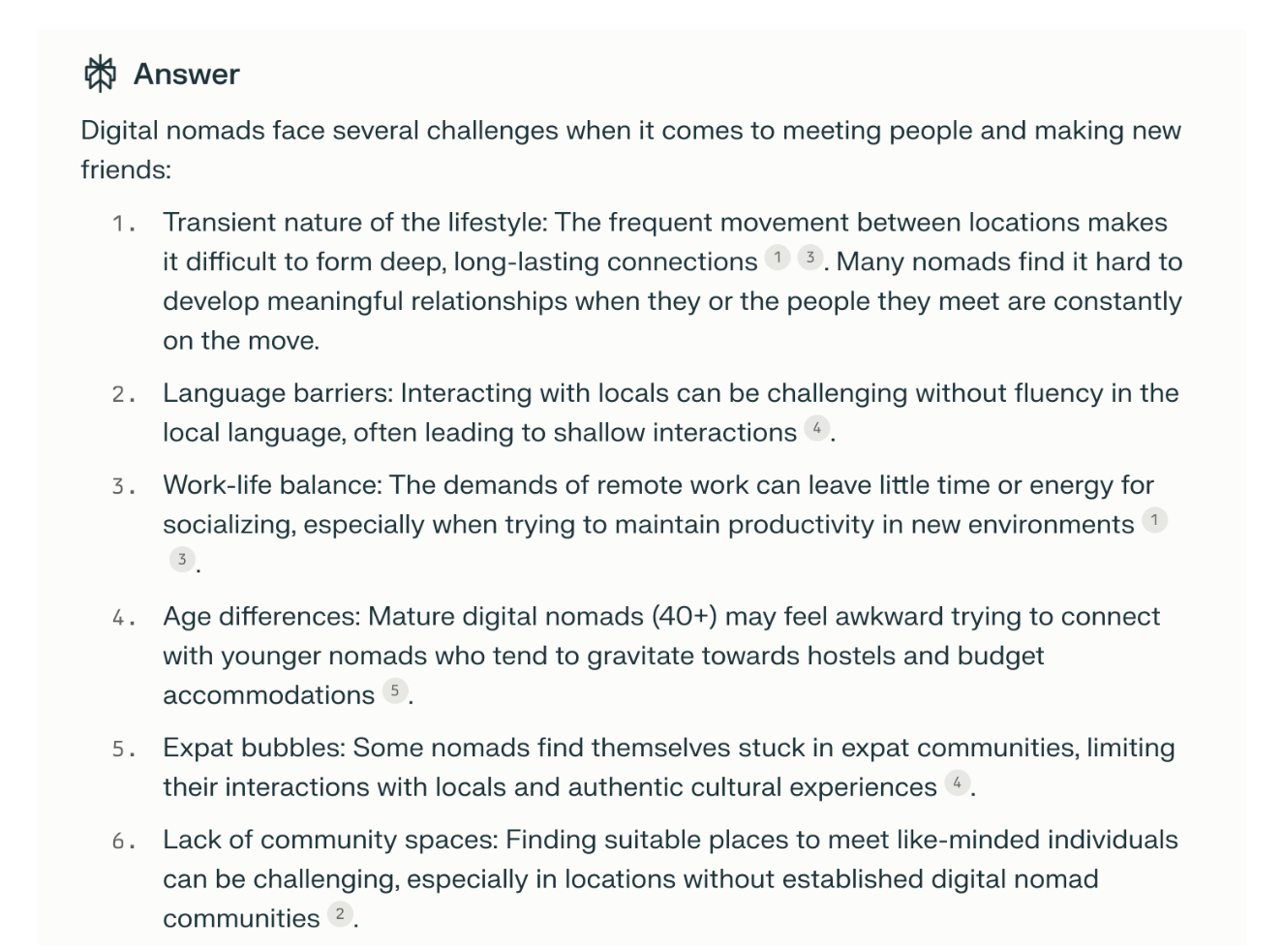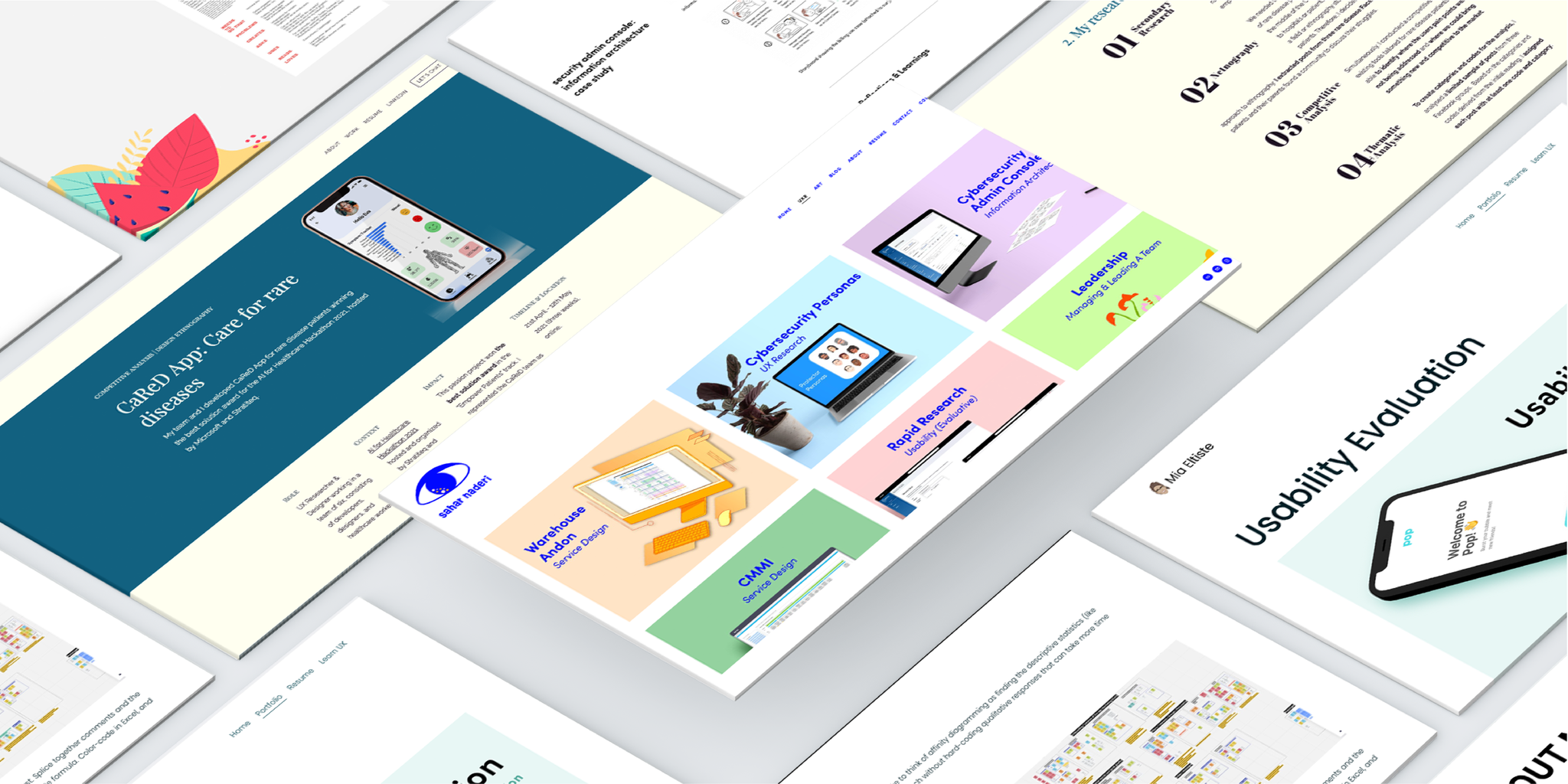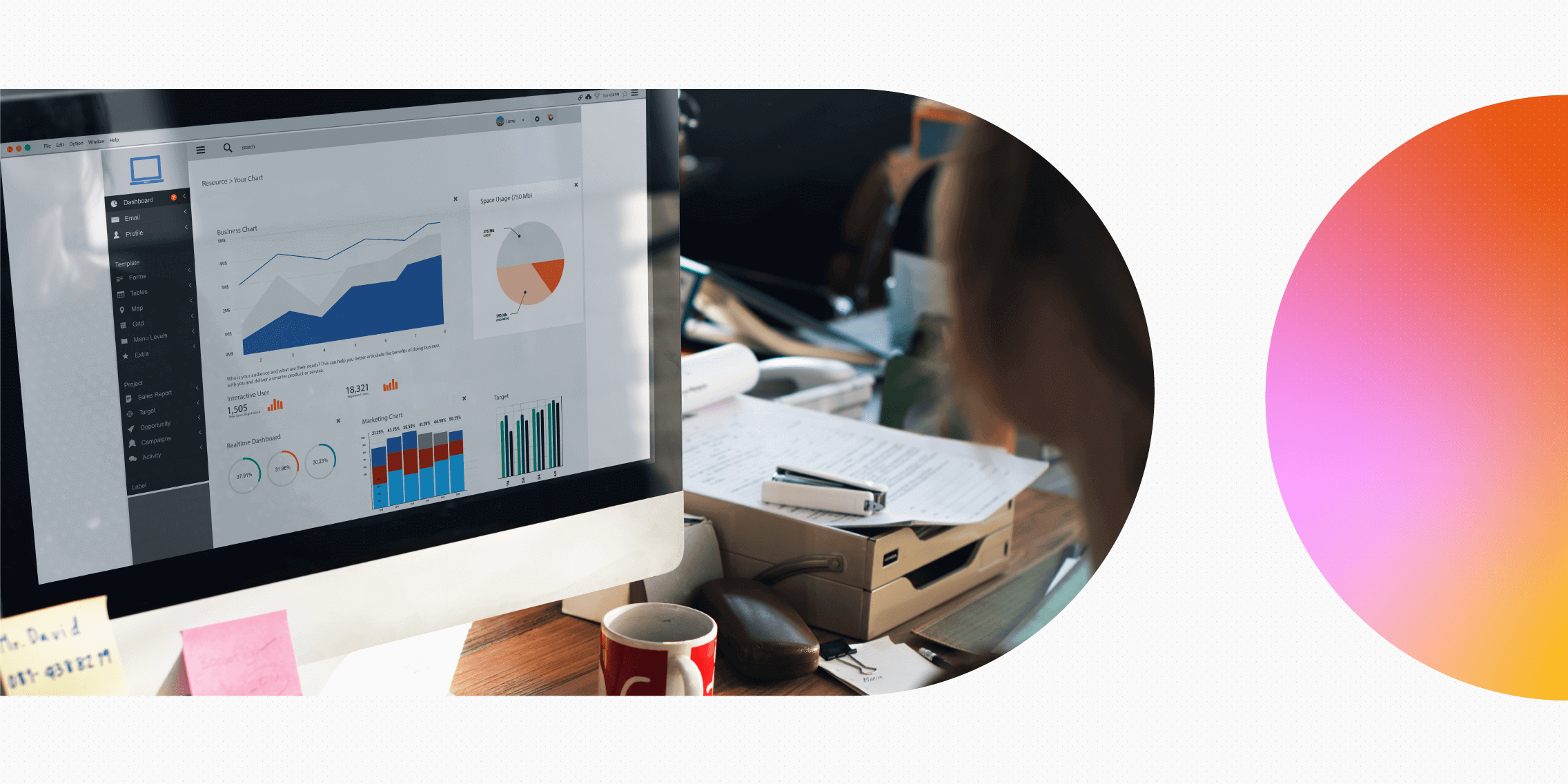When conducting user research, you can ask people to report back on what they did, how they did it, and why. Or you can observe them directly, right at the source of the action.
That’s what ethnography is all about: immersing yourself in the user’s natural setting and observing first-hand how they navigate certain tasks in the real world.
Ethnographic studies can be incredibly useful in UX research—but there are certain limitations to be aware of before you begin.
Keep reading for a complete introduction to ethnography, including what it is, when to use it, and how to effectively plan, implement, and analyse ethnographic studies.
What is ethnography in user research?
Ethnography is a qualitative research method that involves studying people in their natural, everyday environment.
Rather than bringing research participants to a lab or a controlled setting, ethnographic researchers go out into the field. They immerse themselves right among the people and contexts they want to study and document what they observe.
Ethnography stems from the social sciences, where it has traditionally been used to study and understand different communities and cultures around the world. In anthropology, there are many famous cases where ethnographic researchers lived among the communities they were studying for months at a time.
As a UX designer or UX researcher, it’s unlikely that you’ll go and live among your target users for an extended period.
But, by observing them in a more natural setting as they go about certain tasks, you can learn a great deal about your end users’ goals, motivations, behaviours, needs, and pain-points within the product or problem space you’re exploring.
That’s ethnography in a nutshell. Next, let’s consider what ethnographic research might look like in action.
Ethnographic research methods
There are several different methods within the broader field of ethnographic research, including:
- Direct observation where the researcher observes their target group, fly-on-the-wall style, as they go about their usual day-to-day activities or within a certain context.
- Participant-observation where the researcher actively participates in activities carried out by the target group while simultaneously observing them.
- Interviews, both structured and unstructured. Interviews might be conducted one-on-one or as a group, but always contextually—that is, within the participants’ natural environment.
- Diary studies whereby research participants keep a journal reflecting on their activities, experiences, and accompanying thoughts and feelings over a certain period of time.
- Video and audio recordings, whereby the researcher reviews and analyses video or audio clips that have captured the target audience in their natural setting.
- Netnography which focuses on online communities and cultures. Coined by marketing professor Robert Kozinets in 1995, netnography applies the principles of traditional ethnography to the digital realm, observing and analysing conversations and interactions that take place online—such as in public forums and on social media.
Overt vs. covert ethnography
When thinking about ethnographic research methods, it’s important to distinguish between overt and covert ethnography.
With overt ethnography, participants know that they’re being observed as part of a research study. They’re aware of the researcher’s presence, and they’re informed about the nature and purpose of the study.
With covert ethnography, participants are unaware that they’re being studied, and they have no idea who the researcher is—or even that the study is being carried out. As such, they’re unable to give their informed consent.
Both types of ethnography have their pros and cons. Overt ethnography is the most transparent, ethical approach. It ensures that participants are well-informed and can actively agree to take part.
However, there’s always the risk that, knowing they’re being observed, participants will modify their behaviour and think more carefully about how they’re presenting themselves. This is known as the observer effect, and it can impact the authenticity of your observations.
With covert ethnography, you’re more likely to observe your target users behaving naturally—but the lack of informed consent from participants does raise ethical concerns.
In most cases, UX researchers will stick to overt ethnography, making sure they’ve got their participants’ consent, that they’re adhering to user research ethics, and that they’re not engaging in deceitful or potentially harmful practices.
When to use ethnography in user research (and the benefits)
Ethnographic studies are immensely valuable when you need a deep and nuanced understanding of your target audience, their behaviours, and the wider context surrounding them.
Ethnography is especially useful in the early stages of product design, when you’re still figuring out exactly what problem to solve for your target users, or conducting research to come up with the best possible solution.
You might also conduct ethnographic studies if you’re redesigning or improving an existing product. Ethnographic studies can show you how users engage with the product in its current form, highlighting areas for improvement or opportunities for additional features.
Why conduct ethnographic studies? The key benefits
Whether you’re designing a new product from scratch or improving an existing one, ethnography offers many unique benefits. Ethnography in user research helps you to:
- Gather rich, nuanced insights: Rather than relying on self-reported data, you get to directly observe people in their natural environment. This fosters a deep and detailed understanding of how users behave.
- Understand the wider context, not just a snapshot: Ethnographic studies enable you to see not only how the user behaves, but also the external factors and forces surrounding them and influencing their behaviour.
- Pick up non-verbal cues: When you observe people’s body language and facial expressions, you gather additional insight that you otherwise miss when relying solely on the user to articulate their experience in words (as is the case with user interviews and user surveys, for example).
- Foster empathy for your target audience: As you immerse yourself in the user’s world, you can empathise deeply with their challenges, frustrations, pain-points, and needs. This is crucial for coming up with user-centric solutions that genuinely serve your target audience.
Those are the pros—but what about the cons? Let’s take a look.
Limitations of ethnography for user research
Ethnography is undoubtedly one of the most effective research methods for obtaining rich user insights, but it’s not without its limitations—and it’s not suitable for every project or context.
Here are some potential drawbacks to bear in mind when considering ethnography for your research:
- It’s time-consuming. Ethnographic studies typically take place over an extended period, and they require you to be present throughout. You’ll spend a lot of time observing participants, interviewing them, taking notes, and organising and analysing your notes after the event. As such, ethnographic research can take weeks or even months to conclude.
- It can be expensive. Ethnographic research usually requires a more generous budget (and more resources) than, say, running a card sorting session or sending out user surveys. It may also take you away from other projects, resulting in further costs to the team or the business.
- It’s susceptible to the observer effect. As we mentioned earlier, people tend to behave differently or think more carefully about how they behave if they know they’re being observed. This is known as the observer effect, and it can make it difficult to get a truly realistic picture of how people act when they’re not being watched.
- Observer / researcher bias can be a major issue. No matter how hard you try to be a neutral observer, it’s impossible for human researchers to remain completely objective. With ethnographic studies, you’ve got to be mindful of how your own opinions, experiences, expectations, or prejudices might impact how you interpret what you observe.
Ethnography requires careful planning and a great deal of awareness from the researchers involved. Otherwise, you run the risk of spending lots of time and money, only to obtain skewed or biased results.
With the benefits and limitations in mind, let’s consider how ethnographic research can be applied specifically to UX.
How to conduct an ethnographic study for UX research
In this section, we’ll lay out a step-by-step guide for how to conduct an ethnographic study. To illustrate the process, let’s imagine we want to design an app that helps digital nomads make friends while travelling.
Step 1: Define your goals
As with any kind of user research, the first step is to define the goals of your study.
Think about where you’re at in the design process and what you hope to learn about your target audience. In other words: What insights will help you move forward?
At this stage, you might draft a set of questions that you hope to answer throughout the course of your research.
To help us design our digital nomad friend-making app, our main goal might be to understand how digital nomads currently make friends on the road, and to identify what challenges they face.
We might seek to answer questions such as:
- How do digital nomads meet new people on their travels?
- What are their biggest challenges and frustrations at present?
- What features would help them connect with fellow digital nomads?
Step 2: Identify the context
Ethnography is all about immersing yourself in your target users’ natural environment, so the next step is to consider where exactly you’ll conduct your research.
For this step, we might brainstorm locations that digital nomads are likely to frequent—such as cafés, co-working spaces, meetup events, hostels, and bars.
Step 3: Recruit participants (and get their consent)
Think about who you want to participate in your research and how you’ll recruit them.
You might choose to focus on digital nomads within a certain age group, or study people who are relatively new to digital nomad life. Perhaps you’ll approach people in cafés and co-working spaces, or try to recruit participants ahead of time by advertising online or posting on your social networks.
At the same time, consider how you’ll obtain participants’ consent. You might prepare a form for them to sign, for example.
Step 4: Choose and plan your methods
Earlier in this guide, we outlined the different types of ethnographic research—including direct observation, interviews, and diary studies. So which methods will you use for your study?
At this stage, you want to get as organised as possible so that, when the time comes, you can focus wholeheartedly on immersing yourself in your research.
Depending on your chosen methods, think about:
- Obtaining any necessary permission to carry out your research. If you’re planning to interview digital nomads in certain cafés, for example, you may want to run it by the owners first.
- Preparing interview questions and, if necessary, interview schedules.
- Gathering all the necessary materials and tools such as pens and notebooks, a camera or audio recorder, and consent forms.
Step 5: Get out into the field
You’ve meticulously planned your ethnographic study and have everything in place. Now there’s only one thing left to do: get out into the field and immerse yourself in your target audience’s natural environment.
As you observe and interact with your research participants, pay attention not only to what they say and do, but also what’s going on around them. At the same time, stay alert to non-verbal cues such as body language and facial expressions.
Record as much as you can by taking notes, videos, and photos; anything that will help you capture the context in its entirety and support you when it comes to organising and analysing your findings.
What next? Analysing and interpreting ethnographic research data
When conducting ethnographic research, you obtain qualitative data—that is, descriptive, non-numerical data that can’t be objectively measured or quantified. You can learn more about the difference between qualitative and quantitative research data in this guide.
Following your study, you’ll be left with lots of unstructured content to work through—in the form of notes, recordings, videos, and photos. Now your goal is to organise this data and pull out meaningful insights that you can use throughout the design process.
Here’s how to go about analysing and interpreting your ethnographic research data.
1. Immerse yourself in the data
Before you begin any kind of analysis, take some time to review all the data you’ve gathered. Read through your notes and interview transcripts, and watch and listen to any video or audio content you obtained. This helps you to gain a holistic overview of the data and reacquaint yourself with the context of your study.
2. Conduct thematic analysis
Thematic analysis brings structure to your data and starts to uncover potentially meaningful patterns.
It starts with coding—assigning codes or labels to individual quotes, words, or phrases within your notes and transcripts—and then grouping your codes into broader themes.
Next, you’ll review your themes to make sure that, together, they accurately represent the data and paint an all-encompassing picture.
Thinking back to our digital nomad friend-making app, we might cluster our findings into themes such as ‘challenges’, ‘motivations’, ‘current methods for making friends’, and ‘goals and desires’.
You can conduct thematic analysis manually with highlighter pens, sticky notes, and a blank wall or whiteboard, or you can enlist the help of UX research tools. Specialist software can speed up the process of transcribing interviews and assigning codes to the data.
3. Tell a story with your data
After extensive analysis, it’s important to present and share your findings with relevant stakeholders.
You might compile a research report, a slideshow presentation, or even a video—it’s entirely up to you. What matters most is that you tell a meaningful story that communicates the key findings from your study.
Where possible, use real quotes, images, and other research artefacts to illustrate the insights you’re presenting and give stakeholders a glimpse of the surrounding context.
4. Reflect on the limitations of your study
When analysing, interpreting, and sharing your ethnographic research data, it’s critical that you’re able to reflect on and acknowledge the limitations of your study.
This provides important context around any conclusions you draw, and mitigates the risk of over-generalising your findings. It’s also just good practice to think critically about your research and to consider how your own biases might influence your findings.
5. Translate your findings into action points
Last but not least, consider what your findings mean for the evolution of your product. What did your ethnography tell you about your target audience and what they need and expect from the product or service you’re designing?
Translate your findings into action points and next steps—be that creating UX personas, conducting further research to dive deeper into your target users’ needs, or ideating product concepts or features.
Learn more: How to analyse and synthesise your UX research data.
Does AI have a place in ethnographic research?
UX professionals are increasingly using AI-powered UX tools in their everyday workflows, and ethnographic research is no exception.
Although ethnography dates back to the early 1900s—and the principles remain largely unchanged—UX designers and researchers can adapt and modernise their approach to conduct studies that are not only more efficient, but also better suited to the present-day context.
You might use digital tools and software to collect and analyse data, observe and interact with participants online or remotely, and leverage AI to streamline the overall process.
AI-powered research tools can be especially helpful when it comes to transcribing interviews, identifying recurring patterns and themes within your qualitative data, and generating action points and next steps.
In some instances, you might even use AI to assist you in actually conducting your ethnographic studies.
Take Perplexity AI, for example—an AI-powered search engine and conversational interface (similar to ChatGPT, but with real-time access to the internet). With Perplexity, you can narrow your search focus down to Reddit threads, allowing you to observe what people are saying about a specific topic within the Reddit platform.
If you’re interested in creating a friend-finding app for digital nomads, for example, you might enter the following prompt into Perplexity: What challenges do digital nomads currently face when it comes to meeting new people and making friends?
Set the search focus to ‘Reddit’ and the AI will provide a summary of the key challenges, based on what people have posted on Reddit.
Now that’s a pretty efficient and inexpensive way to approach ethnography (or netnography, to use the official term).
Of course, AI is no replacement for human designers and researchers—especially when it comes to understanding your target audience, cultivating empathy, and coming up with human-centric solutions. But, by leveraging AI tools strategically, you can conduct ethnographic studies that are more efficient, cost-effective, and relevant in the modern world.
If you’d like to learn more about Perplexity AI, refer to our full guide: What is Perplexity AI and how can you use it in the design process?
The takeaway
Ethnography helps to paint a rich, vivid, and holistic picture of how people experience certain tasks, encounters, and challenges in the real world. By immersing yourself in the user’s natural environment, you’re able to truly empathise with your target audience, identify what they need from your product, and come up with effective, user-centric solutions.
Learn more about user research
The importance of user research in UX design has long been recognised by designers and businesses alike. And now, as AI automates many aspects of the design process, inherently human skills such as research, critical thinking, problem-solving, and empathy are more valuable than ever.
Level up your research skills with a professional certification
Whether you’re learning about user research as a beginner or want to improve your expertise in the field, a professional course can help you level up your skills and build your confidence.
The UX Design Institute offers a Professional Certificate in User Research which is university credit-rated by Glasgow Caledonian University.
Over the course of 16 weeks, you’ll cover everything from how to plan your research studies and analyse qualitative and quantitative research data, right through to communicating your findings. You’ll also learn how to use AI for user research—making sure you’re equipped to conduct research ethically and efficiently in the real world.
If you’d like to learn more about user research, we can recommend the following:
- The top UX design trends (and what they mean for UX professionals)
- 3 real-world UX research case studies from Google, Airbnb, and Spotify (and what we can learn from them)
- How to find UX researcher jobs







